
A hárem bábája
¥74.74
Válaszok a nap mint nap el?forduló gyakorlati iratkezelési kérdésekre! Hogyan feleljünk meg a jogszabályoknak? Mik azok a SZE?SZ-?k és milyen el?ny?kkel jár az alkalmazásuk? Mi a kül?nbség a digitális és az elektronikus aláírás k?z?tt? Mikor javasolt a vonalkódos digitalizálás használata? Mire kell figyelnem egy iratkezel? rendszer bevezetésénél? ?Az egységes iratkezelés k?zelmúltban bet?lt?tt 10. évfordulója az ágazat felel?s vezet?it és munkatársait is visszatekintésre, ?sszegzésre és a j?v?re irányuló útkeresésre ?szt?nzi. Remek segédeszk?z ehhez e kiadvány, ami professzionális módon foglalja ?ssze az iratkezelés napjainkban aktuális témáit, problémáit. Bízom benne, hogy mindennapi munkájuk során az iratkezel?i állomány, az iratkezelésért felel?s szervezeti egységek vezet?i gyakran kezükbe veszik majd és ?sorvezet?ként” alkalmazzák. Kovács Rezs? – Belügyminisztérium, Iratkezelési és Adatvédelmi F?osztály, f?osztályvezet? ?Lehet-e izgalmasabb annál, mint amikor kit?n? szakemberek vallanak munkájukról, annak jogi és természetes k?rnyezetér?l, a fejl?dés irányairól? A válogatott fejezetek az iratkezelés-, az elektronizálás- és az elektronikus iratkezelés ábécéjének foglalatát adják olyan szerz?k tollából, akik maguk is jártasak a témában és végigjárták annak útveszt?it.” Surányiné dr. Temesi Mária - K?zigazgatási és Elektronikus K?zszolgáltatások K?zponti Hivatala, Kormányzati K?zponti ?rkeztet? F?osztály, f?osztályvezet?
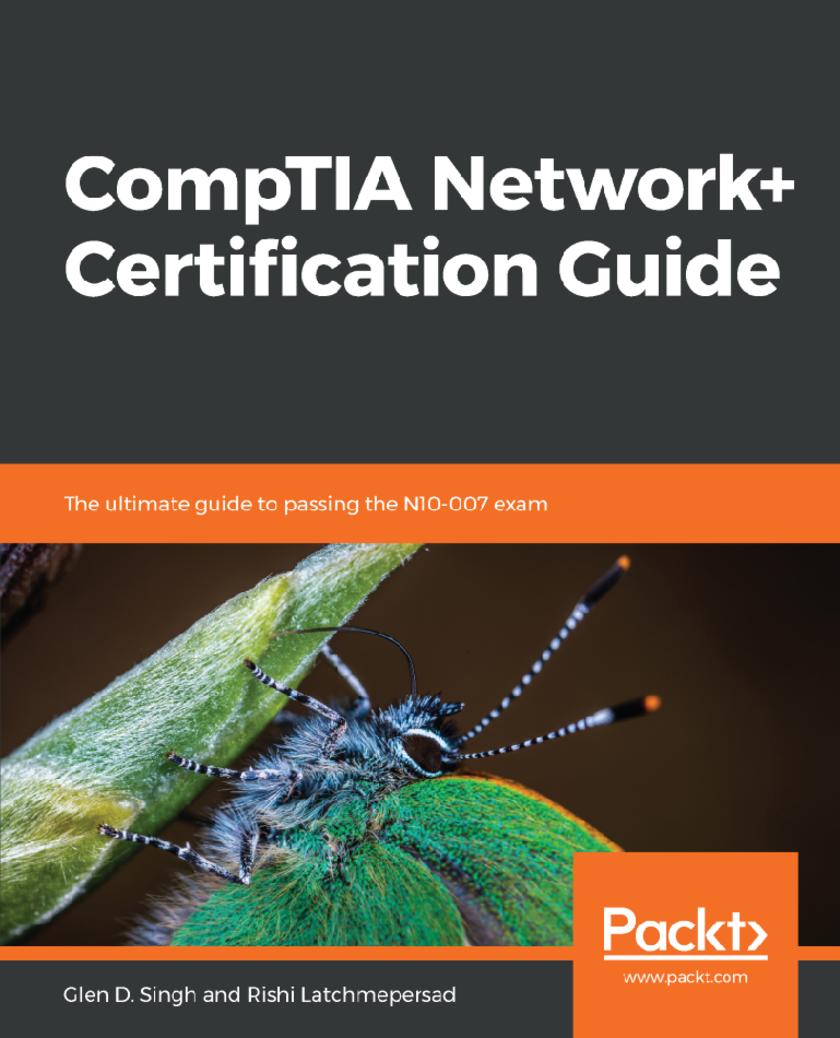
CompTIA Network+ Certification Guide
¥71.93
This is a practical certification guide covering all the exam topics in an easy-to-follow manner backed with self-assessment scenarios for better preparation. Key Features *A step-by-step guide to give you a clear understanding of the Network+ Certification *Learn about network architecture, protocols, security, and network troubleshooting *Confidently ace the N10-007 exam with the help of practice tests Book Description CompTIA certified professionals have always had the upper hand in the information technology industry. This book will be your ideal guide to efficiently passing and achieving this certification. Learn from industry experts and implement their practices to resolve complex IT issues. This book revolves around networking concepts where readers will learn topics like network architecture, security, network monitoring, and troubleshooting. This book will not only prepare the readers conceptually but will also help them pass the N10-007 exam. This guide will also provide practice exercise after every chapter where readers can ensure their concepts are clear. By the end of this book, readers will leverage this guide and the included practice questions to boost their confidence in appearing for the actual certificate. What you will learn *Explain the purpose of a variety of networking concepts and implement them appropriately *Understand physical security and common attacks while securing wired and wireless networks *Understand the fundamentals of IPv4 and IPv6 *Determine and explain the appropriate cabling, device, and storage technologies *Understand network troubleshooting methodology and appropriate tools to support connectivity and performance *Use best practices to manage the network, determine policies, and ensure business continuity Who this book is for This book is ideal for readers wanting to pass the CompTIA Network+ certificate. Rookie network engineers and system administrators interested in enhancing their networking skills would also benefit from this book. No Prior knowledge on networking would be needed.
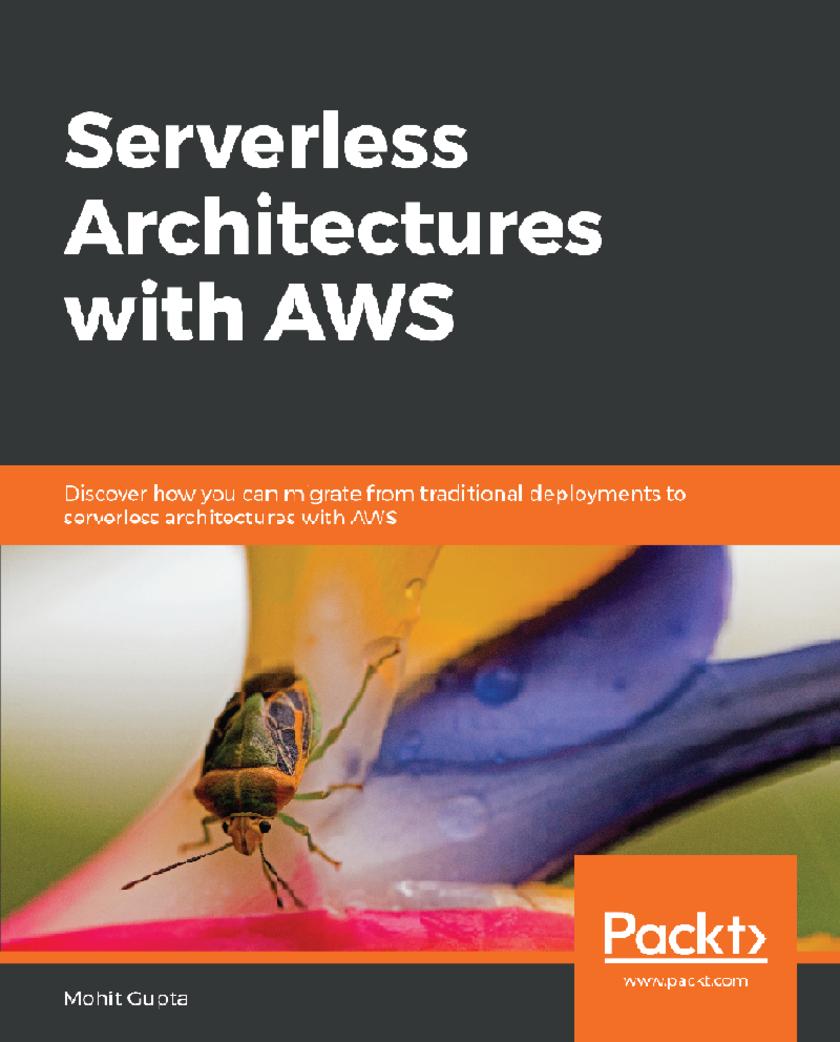
Serverless Architectures with AWS
¥54.49
Don't waste your energy thinking about servers; use AWS to build enterprise-grade serverless applications. Key Features *Learn how to quickly and easily go serverless *Explore AWS and Lambda: the first building blocks of serverless applications on AWS *Study different approaches to deploy and maintain serverless applications Book Description Serverless Architecture with AWS begins with an introduction to the serverless model and helps you get started with AWS and Lambda. You'll also get to grips with other capabilities of the AWS Serverless Platform and see how AWS supports enterprise-grade serverless applications with and without Lambda. This book will guide you in deploying your first serverless project and exploring the capabilities of serverless Amazon Athena, an interactive query service that makes it easy to analyze data in Amazon Simple Storage Service (S3 Amazon) using standard SQL. You’ll also learn about AWS Glue, a fully managed ETL service that makes categorizing data easy and cost-effective. You'll study how Amazon Kinesis makes it possible to unleash the potential of real-time data insights and analytics with capabilities such as video streams, data streams, data firehose, and data analytics. Last but not least, you’ll be equipped to combine Amazon Kinesis capabilities with AWS Lambda to create lightweight serverless architectures. By the end of the book, you will be ready to create and run your first serverless application that takes advantage of the high availability, security, performance, and scalability of AWS. What you will learn *Explore AWS services for supporting a serverless environment *Set up AWS services to make applications scalable and highly available *Deploy a static website with a serverless architecture *Build your first serverless web application *Study the changes in a deployed serverless web application *Apply best practices to ensure overall security, availability, and reliability Who this book is for This book is for you if you want to develop serverless applications and have some prior coding experience. Though no prior experience of AWS is needed, basic knowledge of Java or Node.js will be an added advantage.
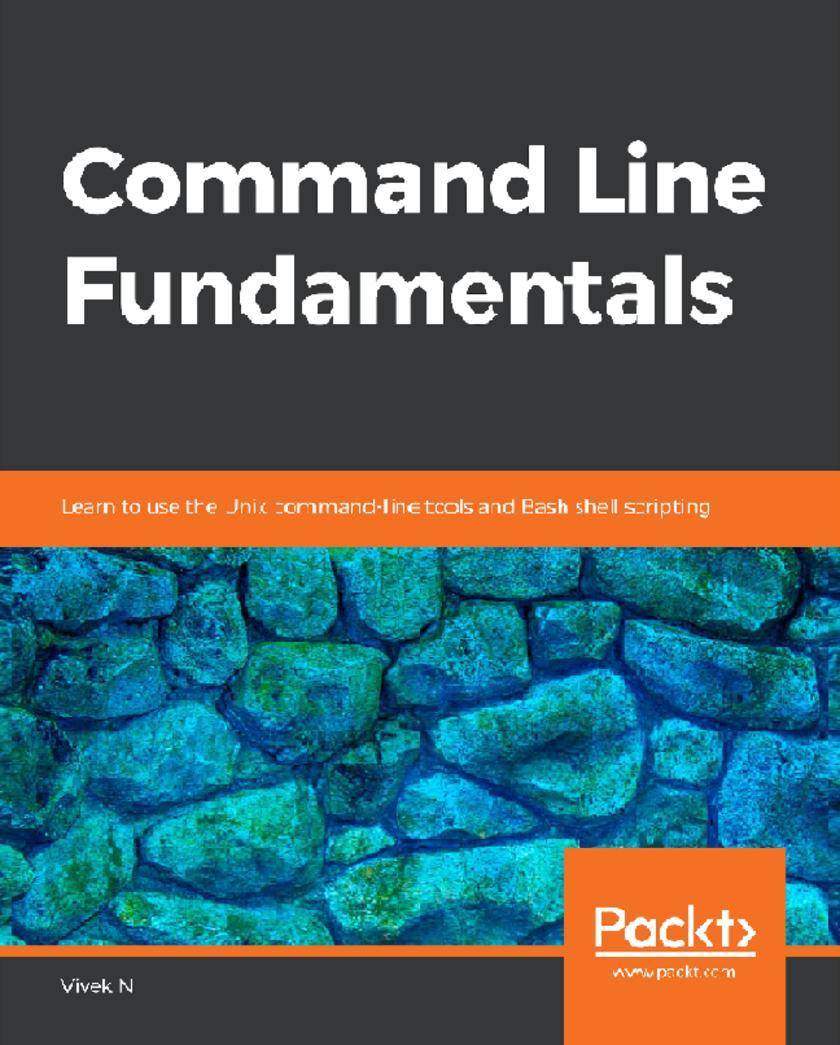
Command Line Fundamentals
¥63.21
Master shell basics and Unix tools and discover easy commands to perform complex tasks with speed Key Features *Learn why the Bash shell is widely used on Linux and iOS *Explore advanced shell concepts, such as pipes and redirection *Understand how to use Unix command-line tools as building blocks for different tasks Book Description The most basic interface to a computer—the command line—remains the most flexible and powerful way of processing data and performing and automating various day-to-day tasks. Command Line Fundamentals begins by exploring the basics, and then focuses on the most common tool, the Bash shell (which is standard on all Linux and iOS systems). As you make your way through the book, you'll explore the traditional Unix command-line programs as implemented by the GNU project. You'll also learn to use redirection and pipelines to assemble these programs to solve complex problems. By the end of this book, you'll have explored the basics of shell scripting, allowing you to easily and quickly automate tasks. What you will learn *Use the Bash shell to run commands *Utilize basic Unix utilities such as cat, tr, sort, and uniq *Explore shell wildcards to manage groups of files *Apply useful keyboard shortcuts in shell *Employ redirection and pipes to process data *Write both basic and advanced shell scripts to automate tasks Who this book is for Command Line Fundamentals is for programmers who use GUIs but want to understand how to use the command line to complete tasks faster.
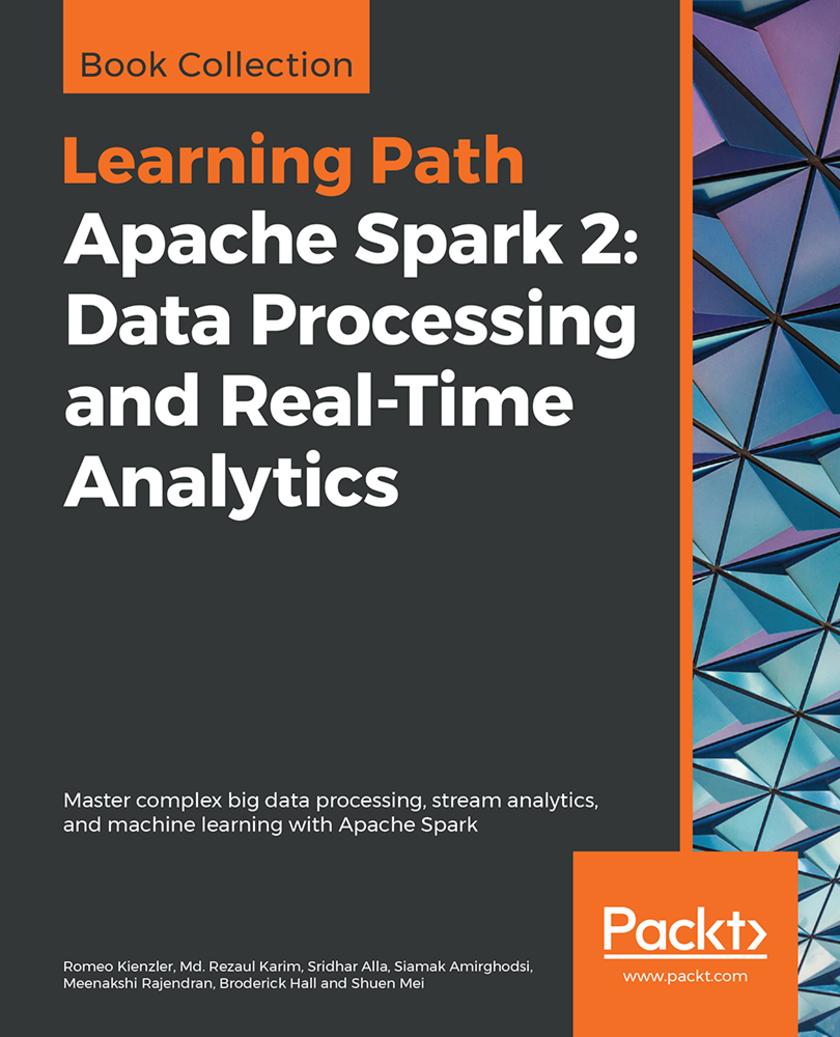
Apache Spark 2: Data Processing and Real-Time Analytics
¥90.46
Build efficient data flow and machine learning programs with this flexible, multi-functional open-source cluster-computing framework Key Features *Master the art of real-time big data processing and machine learning *Explore a wide range of use-cases to analyze large data *Discover ways to optimize your work by using many features of Spark 2.x and Scala Book Description Apache Spark is an in-memory, cluster-based data processing system that provides a wide range of functionalities such as big data processing, analytics, machine learning, and more. With this Learning Path, you can take your knowledge of Apache Spark to the next level by learning how to expand Spark's functionality and building your own data flow and machine learning programs on this platform. You will work with the different modules in Apache Spark, such as interactive querying with Spark SQL, using DataFrames and datasets, implementing streaming analytics with Spark Streaming, and applying machine learning and deep learning techniques on Spark using MLlib and various external tools. By the end of this elaborately designed Learning Path, you will have all the knowledge you need to master Apache Spark, and build your own big data processing and analytics pipeline quickly and without any hassle. This Learning Path includes content from the following Packt products: *Mastering Apache Spark 2.x by Romeo Kienzler *Scala and Spark for Big Data Analytics by Md. Rezaul Karim, Sridhar Alla *Apache Spark 2.x Machine Learning Cookbook by Siamak Amirghodsi, Meenakshi Rajendran, Broderick Hall, Shuen MeiCookbook What you will learn *Get to grips with all the features of Apache Spark 2.x *Perform highly optimized real-time big data processing *Use ML and DL techniques with Spark MLlib and third-party tools *Analyze structured and unstructured data using SparkSQL and GraphX *Understand tuning, debugging, and monitoring of big data applications *Build scalable and fault-tolerant streaming applications *Develop scalable recommendation engines Who this book is for If you are an intermediate-level Spark developer looking to master the advanced capabilities and use-cases of Apache Spark 2.x, this Learning Path is ideal for you. Big data professionals who want to learn how to integrate and use the features of Apache Spark and build a strong big data pipeline will also find this Learning Path useful. To grasp the concepts explained in this Learning Path, you must know the fundamentals of Apache Spark and Scala.
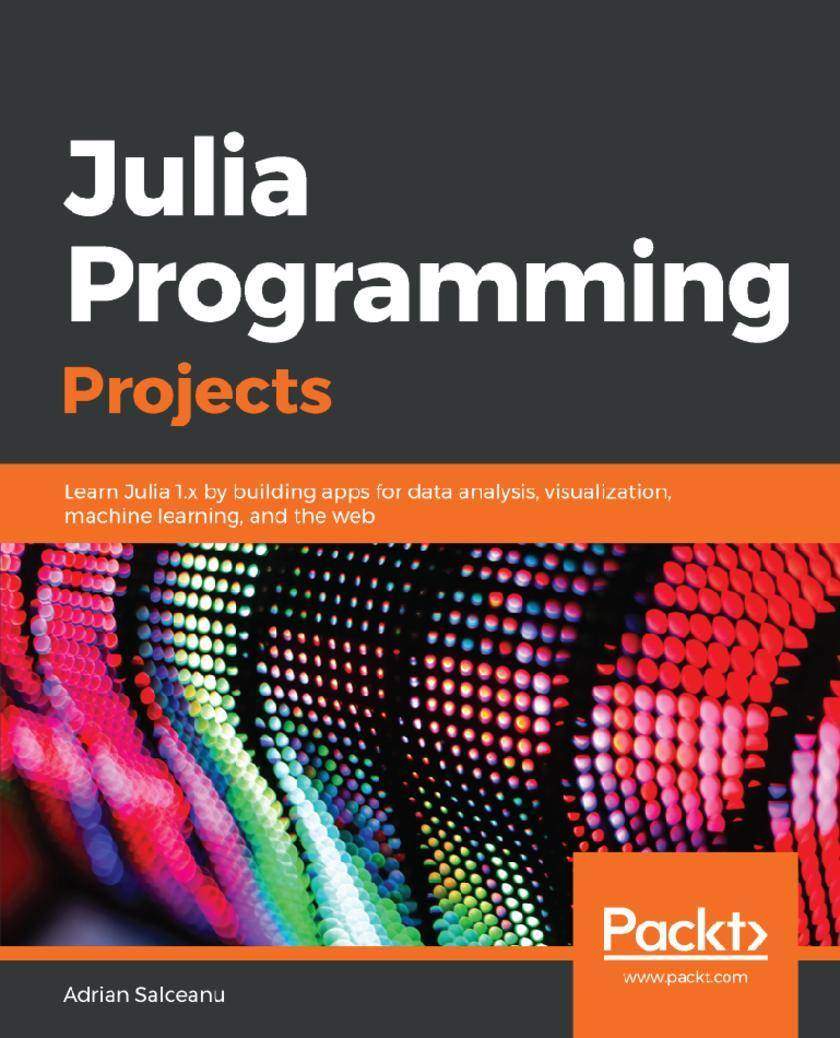
Julia Programming Projects
¥81.74
A step-by-step guide that demonstrates how to build simple-to-advanced applications through examples in Julia Lang 1.x using modern tools Key Features *Work with powerful open-source libraries for data wrangling, analysis, and visualization *Develop full-featured, full-stack web applications *Learn to perform supervised and unsupervised machine learning and time series analysis with Julia Book Description Julia is a new programming language that offers a unique combination of performance and productivity. Its powerful features, friendly syntax, and speed are attracting a growing number of adopters from Python, R, and Matlab, effectively raising the bar for modern general and scientific computing. After six years in the making, Julia has reached version 1.0. Now is the perfect time to learn it, due to its large-scale adoption across a wide range of domains, including fintech, biotech, education, and AI. Beginning with an introduction to the language, Julia Programming Projects goes on to illustrate how to analyze the Iris dataset using DataFrames. You will explore functions and the type system, methods, and multiple dispatch while building a web scraper and a web app. Next, you'll delve into machine learning, where you'll build a books recommender system. You will also see how to apply unsupervised machine learning to perform clustering on the San Francisco business database. After metaprogramming, the final chapters will discuss dates and time, time series analysis, visualization, and forecasting. We'll close with package development, documenting, testing and benchmarking. By the end of the book, you will have gained the practical knowledge to build real-world applications in Julia. What you will learn *Leverage Julia's strengths, its top packages, and main IDE options *Analyze and manipulate datasets using Julia and DataFrames *Write complex code while building real-life Julia applications *Develop and run a web app using Julia and the HTTP package *Build a recommender system using supervised machine learning *Perform exploratory data analysis *Apply unsupervised machine learning algorithms *Perform time series data analysis, visualization, and forecasting Who this book is for Data scientists, statisticians, business analysts, and developers who are interested in learning how to use Julia to crunch numbers, analyze data and build apps will find this book useful. A basic knowledge of programming is assumed.
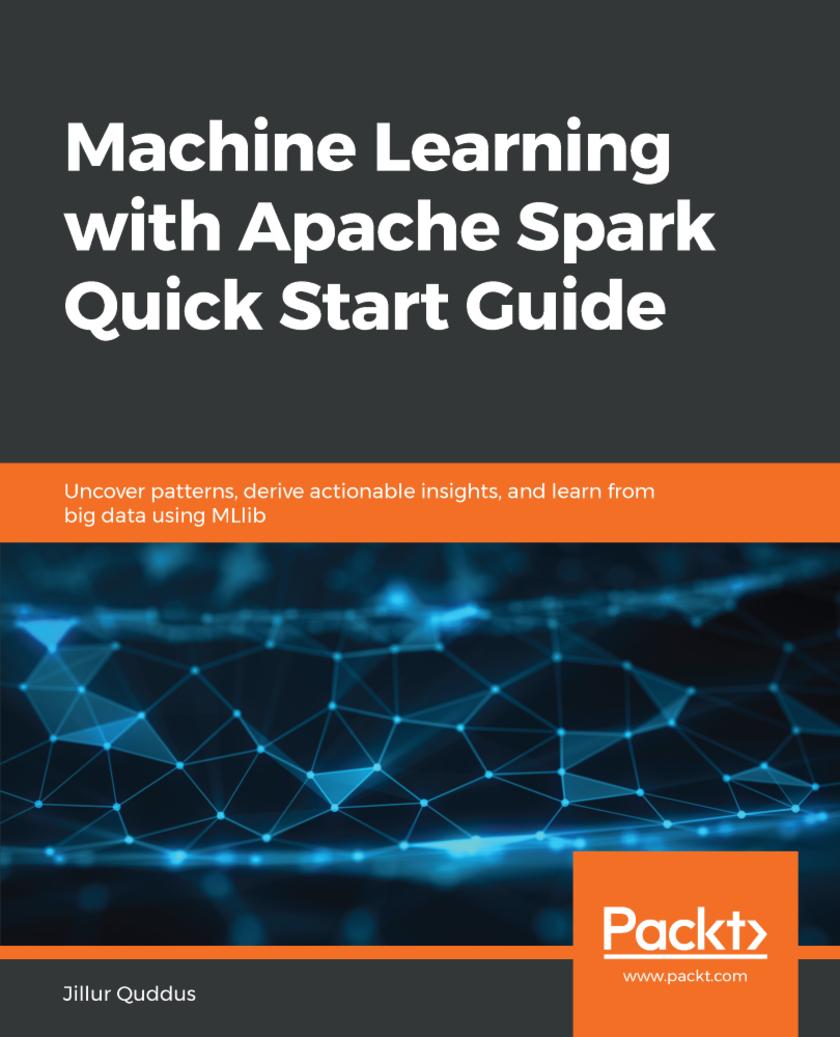
Machine Learning with Apache Spark Quick Start Guide
¥54.49
Combine advanced analytics including Machine Learning, Deep Learning Neural Networks and Natural Language Processing with modern scalable technologies including Apache Spark to derive actionable insights from Big Data in real-time Key Features *Make a hands-on start in the fields of Big Data, Distributed Technologies and Machine Learning *Learn how to design, develop and interpret the results of common Machine Learning algorithms *Uncover hidden patterns in your data in order to derive real actionable insights and business value Book Description Every person and every organization in the world manages data, whether they realize it or not. Data is used to describe the world around us and can be used for almost any purpose, from analyzing consumer habits to fighting disease and serious organized crime. Ultimately, we manage data in order to derive value from it, and many organizations around the world have traditionally invested in technology to help process their data faster and more efficiently. But we now live in an interconnected world driven by mass data creation and consumption where data is no longer rows and columns restricted to a spreadsheet, but an organic and evolving asset in its own right. With this realization comes major challenges for organizations: how do we manage the sheer size of data being created every second (think not only spreadsheets and databases, but also social media posts, images, videos, music, blogs and so on)? And once we can manage all of this data, how do we derive real value from it? The focus of Machine Learning with Apache Spark is to help us answer these questions in a hands-on manner. We introduce the latest scalable technologies to help us manage and process big data. We then introduce advanced analytical algorithms applied to real-world use cases in order to uncover patterns, derive actionable insights, and learn from this big data. What you will learn *Understand how Spark fits in the context of the big data ecosystem *Understand how to deploy and configure a local development environment using Apache Spark *Understand how to design supervised and unsupervised learning models *Build models to perform NLP, deep learning, and cognitive services using Spark ML libraries *Design real-time machine learning pipelines in Apache Spark *Become familiar with advanced techniques for processing a large volume of data by applying machine learning algorithms Who this book is for This book is aimed at Business Analysts, Data Analysts and Data Scientists who wish to make a hands-on start in order to take advantage of modern Big Data technologies combined with Advanced Analytics.
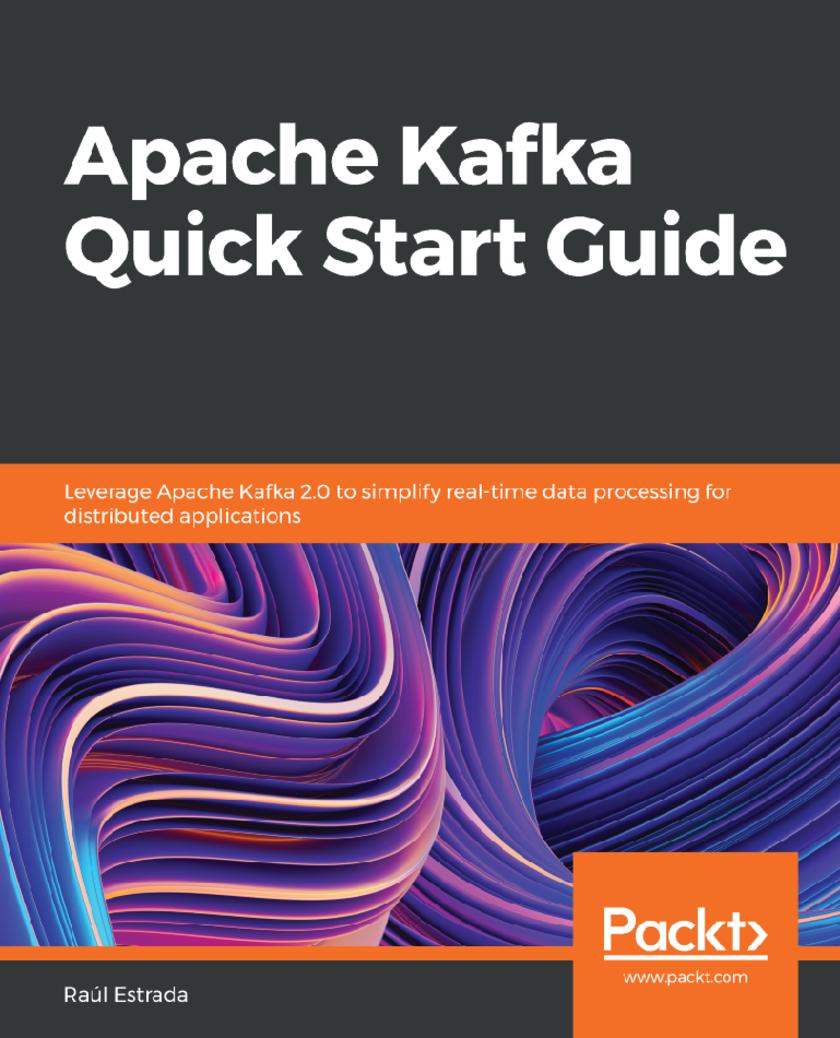
Apache Kafka Quick Start Guide
¥54.49
Process large volumes of data in real-time while building high performance and robust data stream processing pipeline using the latest Apache Kafka 2.0 Key Features *Solve practical large data and processing challenges with Kafka *Tackle data processing challenges like late events, windowing, and watermarking *Understand real-time streaming applications processing using Schema registry, Kafka connect, Kafka streams, and KSQL Book Description Apache Kafka is a great open source platform for handling your real-time data pipeline to ensure high-speed filtering and pattern matching on the ?y. In this book, you will learn how to use Apache Kafka for efficient processing of distributed applications and will get familiar with solving everyday problems in fast data and processing pipelines. This book focuses on programming rather than the configuration management of Kafka clusters or DevOps. It starts off with the installation and setting up the development environment, before quickly moving on to performing fundamental messaging operations such as validation and enrichment. Here you will learn about message composition with pure Kafka API and Kafka Streams. You will look into the transformation of messages in different formats, such asext, binary, XML, JSON, and AVRO. Next, you will learn how to expose the schemas contained in Kafka with the Schema Registry. You will then learn how to work with all relevant connectors with Kafka Connect. While working with Kafka Streams, you will perform various interesting operations on streams, such as windowing, joins, and aggregations. Finally, through KSQL, you will learn how to retrieve, insert, modify, and delete data streams, and how to manipulate watermarks and windows. What you will learn *How to validate data with Kafka *Add information to existing data ?ows *Generate new information through message composition *Perform data validation and versioning with the Schema Registry *How to perform message Serialization and Deserialization *How to perform message Serialization and Deserialization *Process data streams with Kafka Streams *Understand the duality between tables and streams with KSQL Who this book is for This book is for developers who want to quickly master the practical concepts behind Apache Kafka. The audience need not have come across Apache Kafka previously; however, a familiarity of Java or any JVM language will be helpful in understanding the code in this book.
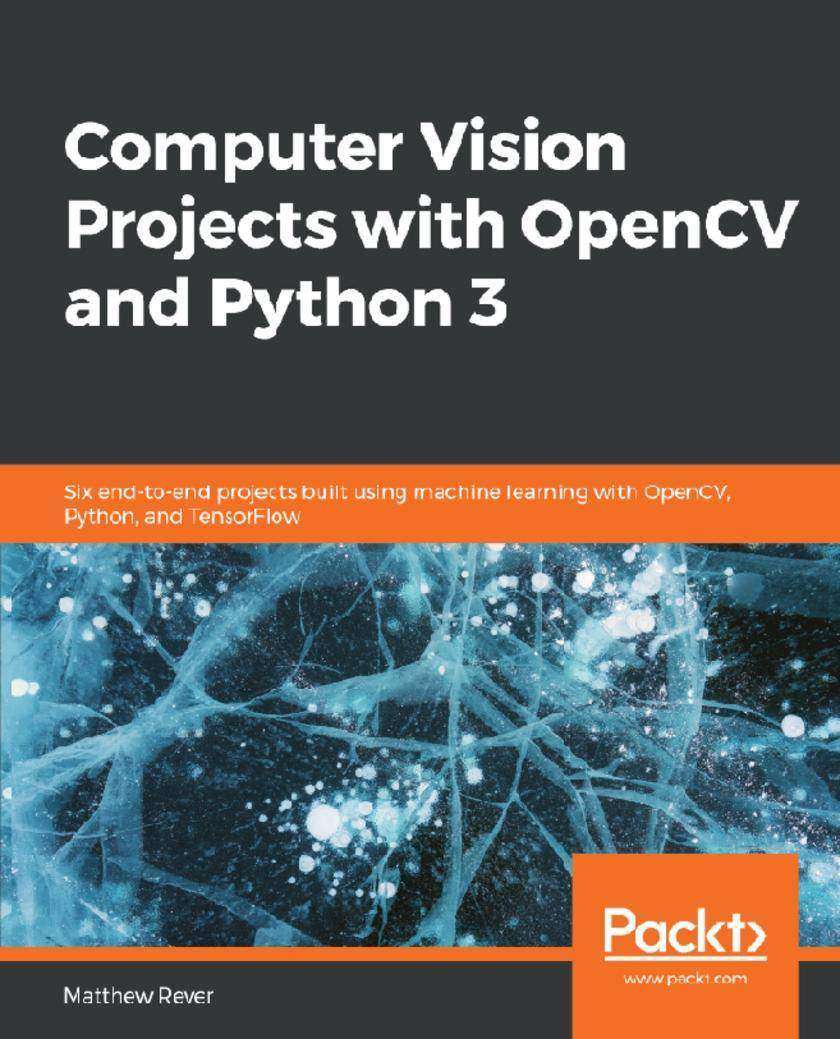
Computer Vision Projects with OpenCV and Python 3
¥54.49
Gain a working knowledge of advanced machine learning and explore Python’s powerful tools for extracting data from images and videos Key Features *Implement image classification and object detection using machine learning and deep learning *Perform image classification, object detection, image segmentation, and other Computer Vision tasks *Crisp content with a practical approach to solving real-world problems in Computer Vision Book Description Python is the ideal programming language for rapidly prototyping and developing production-grade codes for image processing and Computer Vision with its robust syntax and wealth of powerful libraries. This book will help you design and develop production-grade Computer Vision projects tackling real-world problems. With the help of this book, you will learn how to set up Anaconda and Python for the major OSes with cutting-edge third-party libraries for Computer Vision. You'll learn state-of-the-art techniques for classifying images, finding and identifying human postures, and detecting faces within videos. You will use powerful machine learning tools such as OpenCV, Dlib, and TensorFlow to build exciting projects such as classifying handwritten digits, detecting facial features,and much more. The book also covers some advanced projects, such as reading text from license plates from real-world images using Google’s Tesseract software, and tracking human body poses using DeeperCut within TensorFlow. By the end of this book, you will have the expertise required to build your own Computer Vision projects using Python and its associated libraries. What you will learn *Install and run major Computer Vision packages within Python *Apply powerful support vector machines for simple digit classification *Understand deep learning with TensorFlow *Build a deep learning classifier for general images *Use LSTMs for automated image captioning *Read text from real-world images *Extract human pose data from images Who this book is for Python programmers and machine learning developers who wish to build exciting Computer Vision projects using the power of machine learning and OpenCV will find this book useful. The only prerequisite for this book is that you should have a sound knowledge of Python programming.
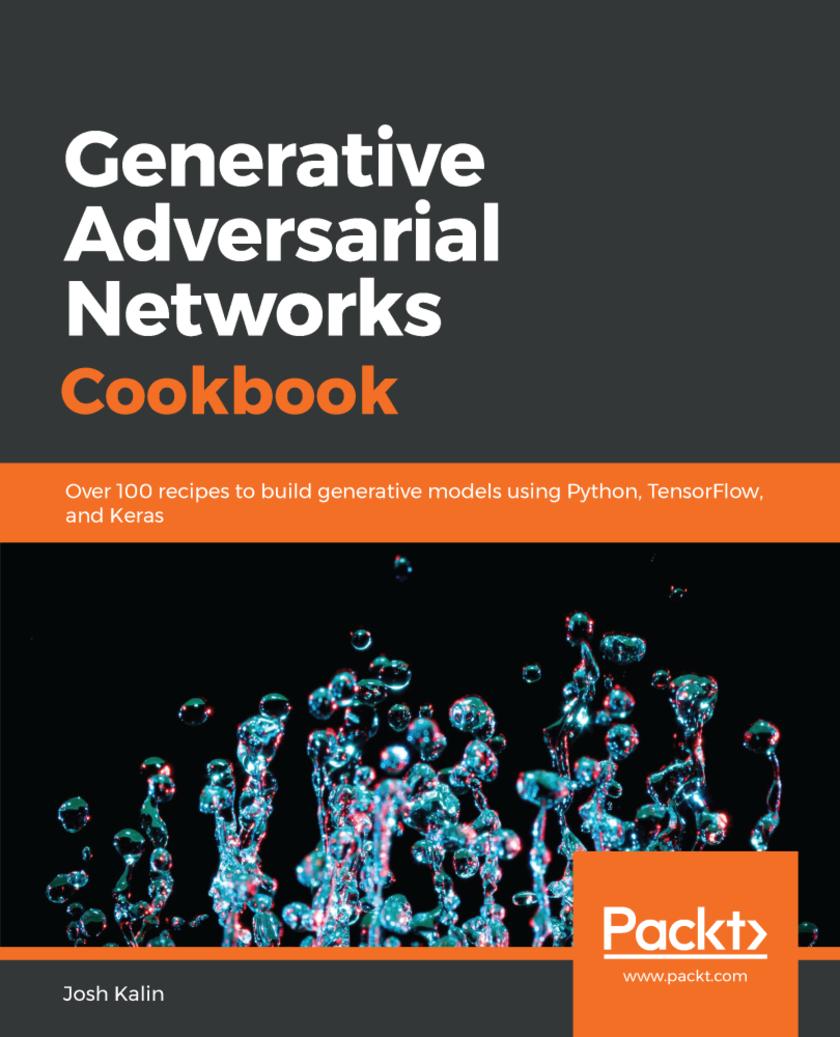
Generative Adversarial Networks Cookbook
¥81.74
Simplify next-generation deep learning by implementing powerful generative models using Python, TensorFlow and Keras Key Features *Understand the common architecture of different types of GANs *Train, optimize, and deploy GAN applications using TensorFlow and Keras *Build generative models with real-world data sets, including 2D and 3D data Book Description Developing Generative Adversarial Networks (GANs) is a complex task, and it is often hard to find code that is easy to understand. This book leads you through eight different examples of modern GAN implementations, including CycleGAN, simGAN, DCGAN, and 2D image to 3D model generation. Each chapter contains useful recipes to build on a common architecture in Python, TensorFlow and Keras to explore increasingly difficult GAN architectures in an easy-to-read format. The book starts by covering the different types of GAN architecture to help you understand how the model works. This book also contains intuitive recipes to help you work with use cases involving DCGAN, Pix2Pix, and so on. To understand these complex applications, you will take different real-world data sets and put them to use. By the end of this book, you will be equipped to deal with the challenges and issues that you may face while working with GAN models, thanks to easy-to-follow code solutions that you can implement right away. What you will learn *Structure a GAN architecture in pseudocode *Understand the common architecture for each of the GAN models you will build *Implement different GAN architectures in TensorFlow and Keras *Use different datasets to enable neural network functionality in GAN models *Combine different GAN models and learn how to fine-tune them *Produce a model that can take 2D images and produce 3D models *Develop a GAN to do style transfer with Pix2Pix Who this book is for This book is for data scientists, machine learning developers, and deep learning practitioners looking for a quick reference to tackle challenges and tasks in the GAN domain. Familiarity with machine learning concepts and working knowledge of Python programming language will help you get the most out of the book.
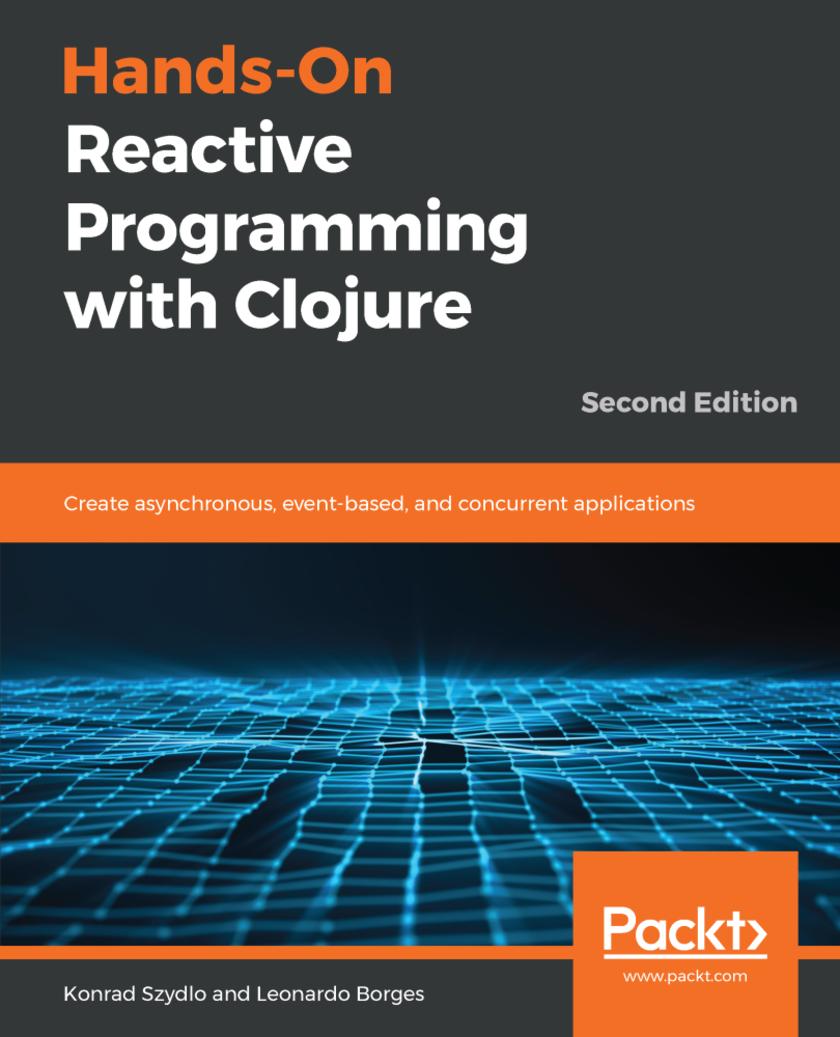
Hands-On Reactive Programming with Clojure
¥63.21
Learn how to use RxClojure to deal with stateful computations Key Features * Leverage the features of Functional Reactive Programming using Clojure * Create dataflow-based systems that are the building blocks of Reactive Programming * Use different Functional Reactive Programming frameworks, techniques, and patterns to solve real-world problems Book Description Reactive Programming is central to many concurrent systems, and can help make the process of developing highly concurrent, event-driven, and asynchronous applications simpler and less error-prone. This book will allow you to explore Reactive Programming in Clojure 1.9 and help you get to grips with some of its new features such as transducers, reader conditionals, additional string functions, direct linking, and socket servers. Hands-On Reactive Programming with Clojure starts by introducing you to Functional Reactive Programming (FRP) and its formulations, as well as showing you how it inspired Compositional Event Systems (CES). It then guides you in understanding Reactive Programming as well as learning how to develop your ability to work with time-varying values thanks to examples of reactive applications implemented in different frameworks. You'll also gain insight into some interesting Reactive design patterns such as the simple component, circuit breaker, request-response, and multiple-master replication. Finally, the book introduces microservices-based architecture in Clojure and closes with examples of unit testing frameworks. By the end of the book, you will have gained all the knowledge you need to create applications using different Reactive Programming approaches. What you will learn * Understand how to think in terms of time-varying values and event streams * Create, compose, and transform observable sequences using Reactive extensions * Build a CES framework from scratch using core.async as its foundation * Develop a simple ClojureScript game using Reagi * Integrate Om and RxJS in a web application * Implement a reactive API in Amazon Web Services (AWS) * Discover helpful approaches to backpressure and error handling * Get to grips with futures and their applications Who this book is for If you’re interested in using Reactive Programming to build asynchronous and concurrent applications, this is the book for you. Basic knowledge of Clojure programming is necessary to understand the concepts covered in this book.
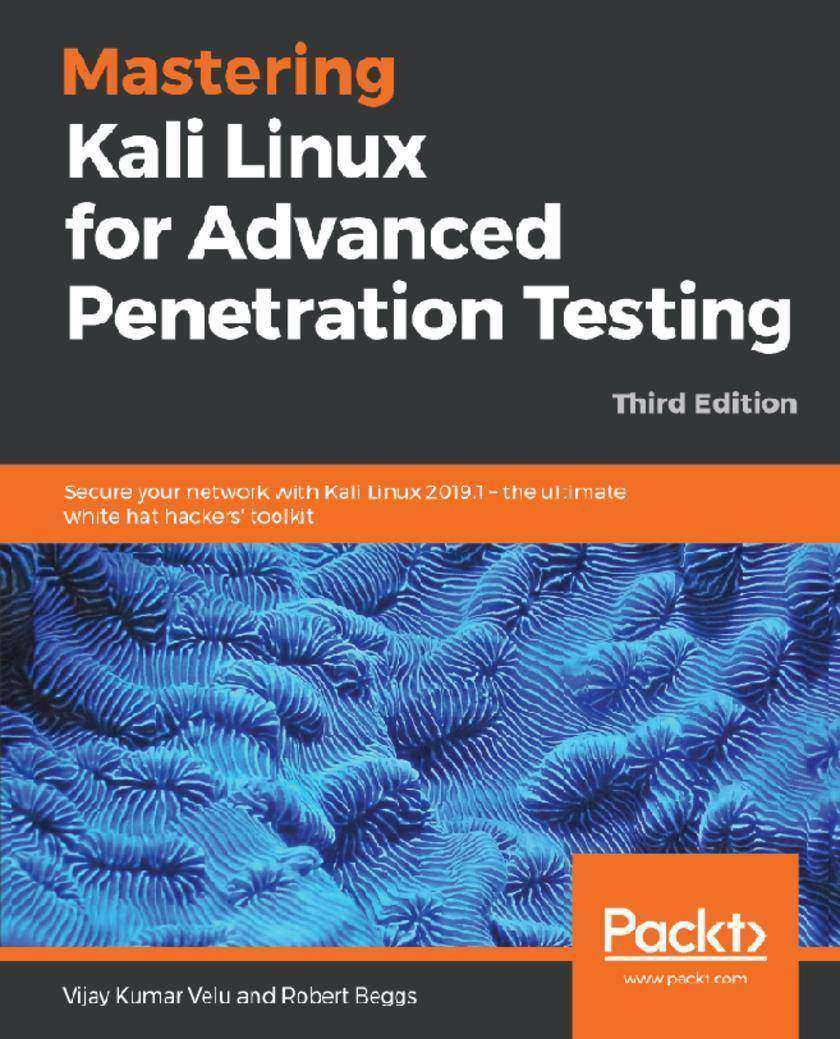
Mastering Kali Linux for Advanced Penetration Testing
¥90.46
A practical guide to testing your infrastructure security with Kali Linux, the preferred choice of pentesters and hackers Key Features * Employ advanced pentesting techniques with Kali Linux to build highly secured systems * Discover various stealth techniques to remain undetected and defeat modern infrastructures * Explore red teaming techniques to exploit secured environment Book Description This book takes you, as a tester or security practitioner, through the reconnaissance, vulnerability assessment, exploitation, privilege escalation, and post-exploitation activities used by pentesters. To start with, you'll use a laboratory environment to validate tools and techniques, along with an application that supports a collaborative approach for pentesting. You'll then progress to passive reconnaissance with open source intelligence and active reconnaissance of the external and internal infrastructure. You'll also focus on how to select, use, customize, and interpret the results from different vulnerability scanners, followed by examining specific routes to the target, which include bypassing physical security and the exfiltration of data using a variety of techniques. You'll discover concepts such as social engineering, attacking wireless networks, web services, and embedded devices. Once you are confident with these topics, you'll learn the practical aspects of attacking user client systems by backdooring with fileless techniques, followed by focusing on the most vulnerable part of the network – directly attacking the end user. By the end of this book, you'll have explored approaches for carrying out advanced pentesting in tightly secured environments, understood pentesting and hacking techniques employed on embedded peripheral devices. What you will learn * Configure the most effective Kali Linux tools to test infrastructure security * Employ stealth to avoid detection in the infrastructure being tested * Recognize when stealth attacks are being used against your infrastructure * Exploit networks and data systems using wired and wireless networks as well as web services * Identify and download valuable data from target systems * Maintain access to compromised systems * Use social engineering to compromise the weakest part of the network - the end users Who this book is for This third edition of Mastering Kali Linux for Advanced Penetration Testing is for you if you are a security analyst, pentester, ethical hacker, IT professional, or security consultant wanting to maximize the success of your infrastructure testing using some of the advanced features of Kali Linux. Prior exposure of penetration testing and ethical hacking basics will be helpful in making the most out of this book.
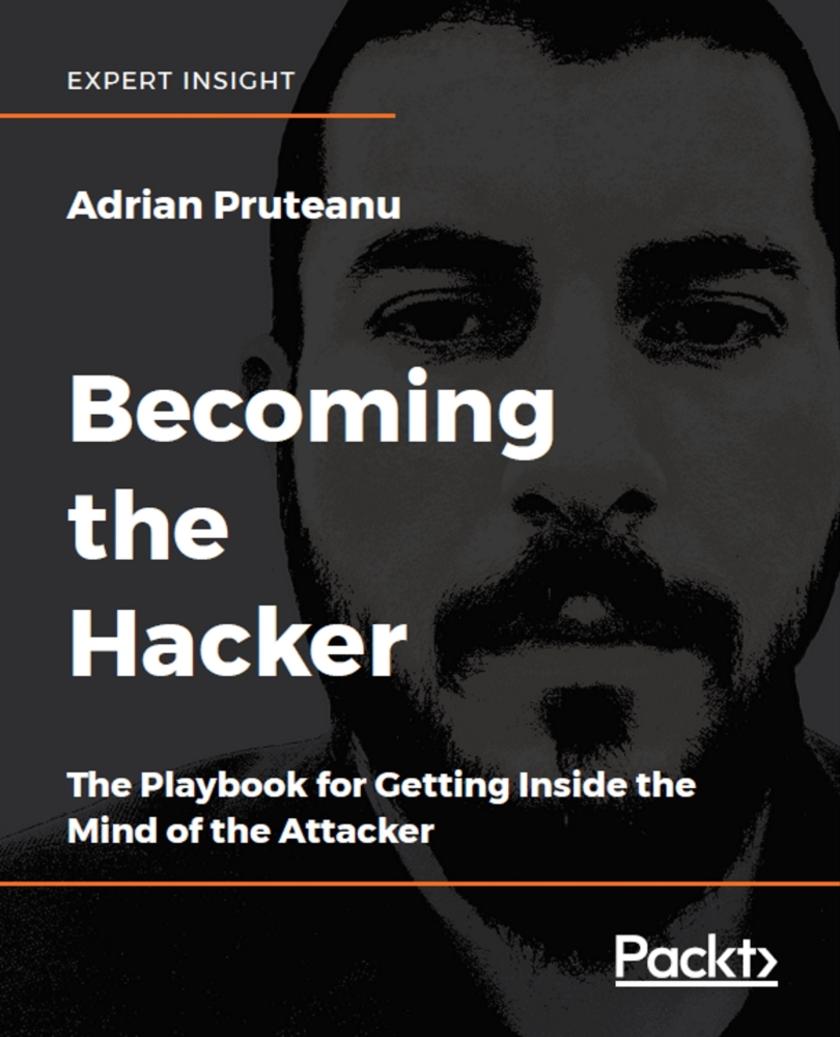
Becoming the Hacker
¥73.02
Web penetration testing by becoming an ethical hacker. Protect the web by learning the tools, and the tricks of the web application attacker. Key Features * Builds on books and courses on penetration testing for beginners * Covers both attack and defense perspectives * Examines which tool to deploy to suit different applications and situations Book Description Becoming the Hacker will teach you how to approach web penetration testing with an attacker's mindset. While testing web applications for performance is common, the ever-changing threat landscape makes security testing much more difficult for the defender. There are many web application tools that claim to provide a complete survey and defense against potential threats, but they must be analyzed in line with the security needs of each web application or service. We must understand how an attacker approaches a web application and the implications of breaching its defenses. Through the first part of the book, Adrian Pruteanu walks you through commonly encountered vulnerabilities and how to take advantage of them to achieve your goal. The latter part of the book shifts gears and puts the newly learned techniques into practice, going over scenarios where the target may be a popular content management system or a containerized application and its network. Becoming the Hacker is a clear guide to web application security from an attacker's point of view, from which both sides can benefit. What you will learn * Study the mindset of an attacker * Adopt defensive strategies * Classify and plan for standard web application security threats * Prepare to combat standard system security problems * Defend WordPress and mobile applications * Use security tools and plan for defense against remote execution Who this book is for The reader should have basic security experience, for example, through running a network or encountering security issues during application development. Formal education in security is useful, but not required. This title is suitable for people with at least two years of experience in development, network management, or DevOps, or with an established interest in security.
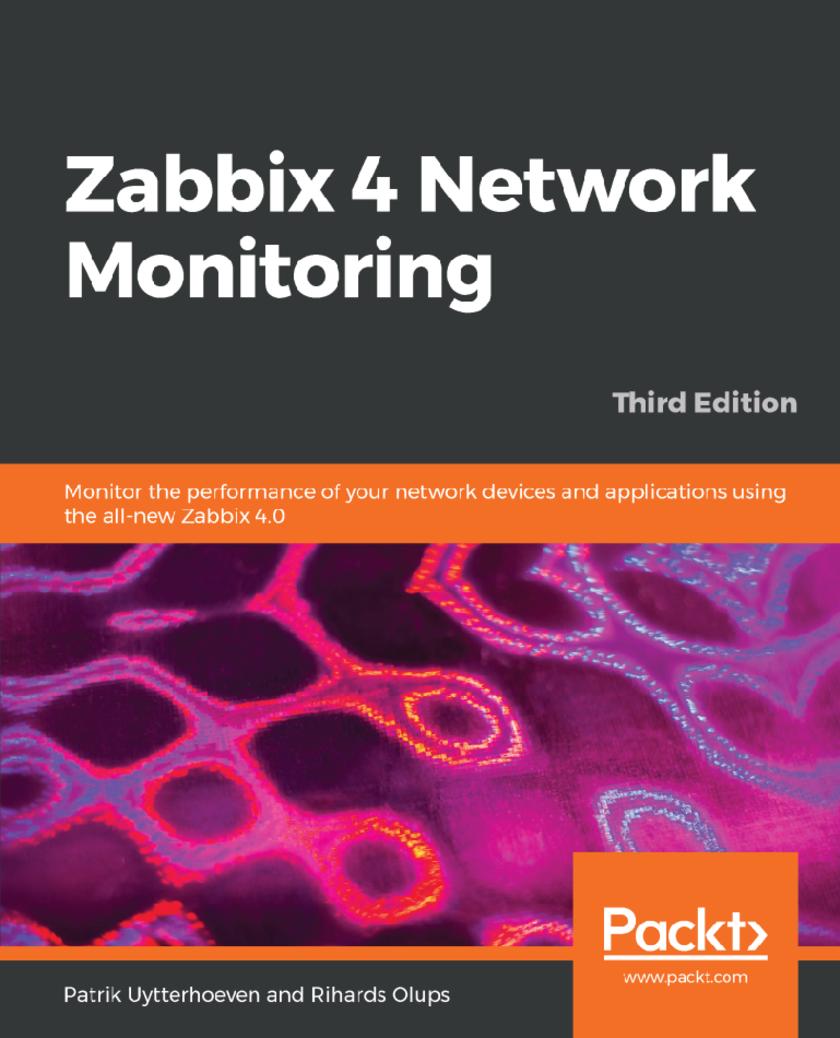
Zabbix 4 Network Monitoring
¥90.46
Gather detailed statistics and deploy impressive business solutions with Zabbix 4.0 Key Features *Experience the full impact of Zabbix 4.0, a useful and increasingly popular tool *Enhance your network’s performance and manage hosts and systems *A step-by-step guide to smarter network monitoring Book Description Zabbix 4 Network Monitoring is the perfect starting point for monitoring the performance of your network devices and applications with Zabbix. Even if you’ve never used a monitoring solution before, this book will get you up and running quickly. You’ll learn to monitor more sophisticated operations with ease and soon feel in complete control of your network, ready to meet any challenges you might face. Starting with the installation, you will discover the new features in Zabbix 4.0. You will then get to grips with native Zabbix agents and Simple Network Management Protocol (SNMP) devices. You will also explore Zabbix's integrated functionality for monitoring Java application servers and VMware. This book also covers notifications, permission management, system maintenance, and troubleshooting, so you can be confident that every potential challenge and task is under your control. If you're working with larger environments, you'll also be able to find out more about distributed data collection using Zabbix proxies. Once you're confident and ready to put these concepts into practice, you will understand how to optimize and improve performance. Troubleshooting network issues is vital for anyone working with Zabbix, so the book also helps you work through any technical snags and glitches you might face. By the end of this book, you will have learned more advanced techniques to fine-tune your system and make sure it is in a healthy state. What you will learn *Install Zabbix server and an agent from source *Manage hosts, users, and permissions while acting upon monitored conditions *Visualize data with the help of ad hoc graphs, custom graphs, and maps *Simplify complex configurations and learn to automate them *Monitor everything from web pages to IPMI devices and Java applications to VMware stats *Configure Zabbix to send alerts including problem severity and time periods *Troubleshoot any network issue Who this book is for If you're new to Zabbix look no further than this book. Zabbix 4 Network Monitoring is for system and network administrators who are looking to put their knowledge to work with Zabbix 4.0.
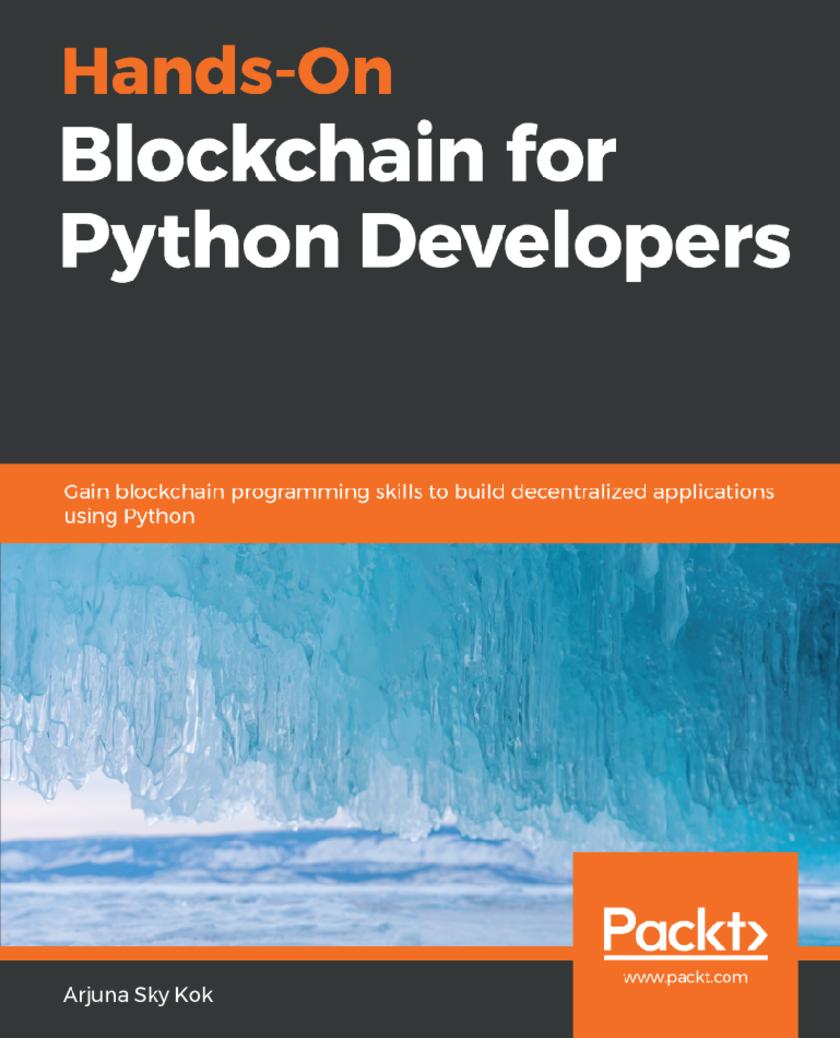
Hands-On Blockchain for Python Developers
¥81.74
Implement real-world decentralized applications using Python, Vyper, Populus, and Ethereum Key Features * Stay up-to-date with everything you need to know about the blockchain ecosystem * Implement smart contracts, wallets, and decentralized applications(DApps) using Python libraries * Get deeper insights into storing content in a distributed storage platform Book Description Blockchain is seen as the main technological solution that works as a public ledger for all cryptocurrency transactions. This book serves as a practical guide to developing a full-fledged decentralized application with Python to interact with the various building blocks of blockchain applications. Hands-On Blockchain for Python Developers starts by demonstrating how blockchain technology and cryptocurrency hashing works. You will understand the fundamentals and benefits of smart contracts such as censorship resistance and transaction accuracy. As you steadily progress, you'll go on to build smart contracts using Vyper, which has a similar syntax to Python. This experience will further help you unravel the other benefits of smart contracts, including reliable storage and backup, and efficiency. You'll also use web3.py to interact with smart contracts and leverage the power of both the web3.py and Populus framework to build decentralized applications that offer security and seamless integration with cryptocurrencies. As you explore later chapters, you'll learn how to create your own token on top of Ethereum and build a cryptocurrency wallet graphical user interface (GUI) that can handle Ethereum and Ethereum Request for Comments (ERC-20) tokens using the PySide2 library. This will enable users to seamlessly store, send, and receive digital money. Toward the end, you'll implement InterPlanetary File System (IPFS) technology in your decentralized application to provide a peer-to-peer filesystem that can store and expose media. By the end of this book, you'll be well-versed in blockchain programming and be able to build end-to-end decentralized applications on a range of domains using Python. What you will learn * Understand blockchain technology and what makes it an immutable database * Use the features of web3.py API to interact with the smart contract * Create your own cryptocurrency and token in Ethereum using Vyper * Use IPFS features to store content on the decentralized storage platform * Implement a Twitter-like decentralized application with a desktop frontend * Build decentralized applications in the shape of console, web, and desktop applications Who this book is for If you are a Python developer who wants to enter the world of blockchain, Hands-On Blockchain for Python Developers is for you. The book will be your go-to guide to becoming well-versed with the blockchain ecosystem and building your own decentralized applications using Python and library support.
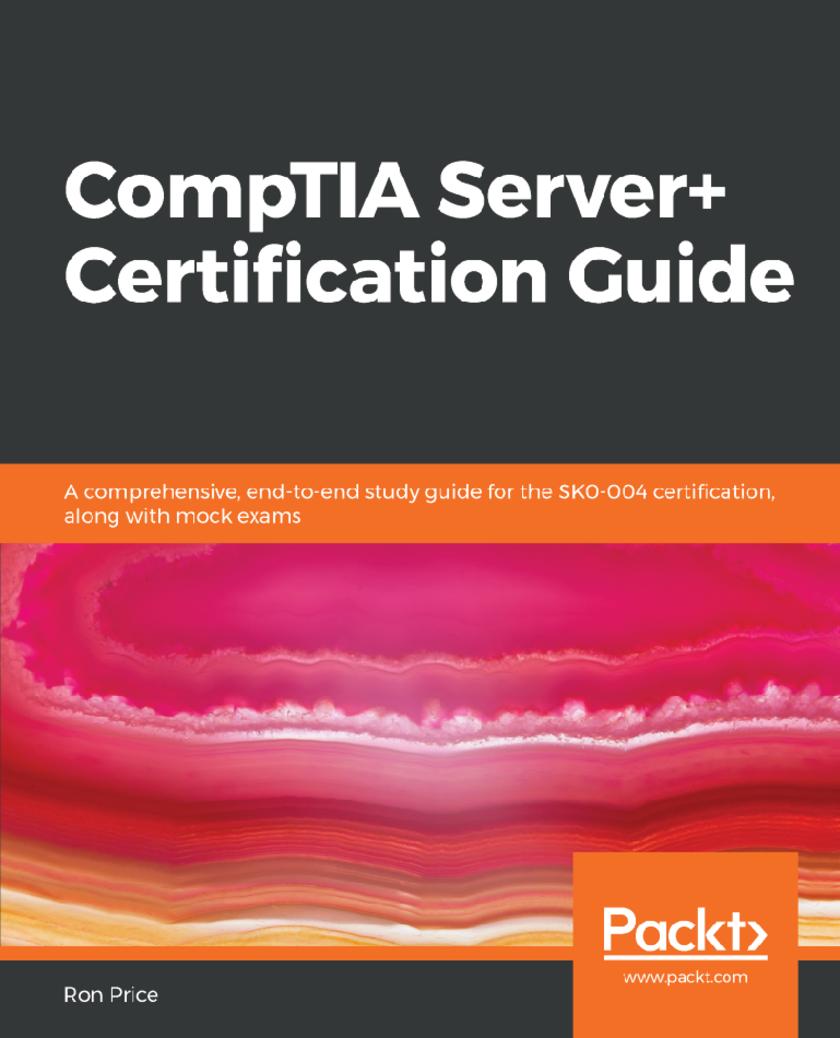
CompTIA Server+ Certification Guide
¥73.02
Master the concepts and techniques that will enable you to succeed on the SK0-004 exam the first time with the help of this study guide Key Features * Explore virtualisation, IPv4 & IPv6 networking, administration and more * Enhancing limited knowledge of server configuration and function * A study guide that covers the objectives for the certification examination Book Description CompTIA Server+ Certification is one of the top 5 IT certifications that is vendor neutral.System administrators opt for CompTIA server+ Certification to gain advanced knowledge of concepts including troubleshooting and networking. This book will initially start with the configuration of a basic network server and the configuration for each of its myriad roles. The next set of chapters will provide an overview of the responsibilities and tasks performed by a system administrator to manage and maintain a network server. Moving ahead, you will learn the basic security technologies, methods, and procedures that can be applied to a server and its network. Next, you will cover the troubleshooting procedures and methods in general, and specifically for hardware, software, networks, storage devices, and security applications. Toward the end of this book, we will cover a number of troubleshooting and security mitigation concepts for running admin servers with ease. This guide will be augmented by test questions and mock papers that will help you obtain the necessary certification. By the end of this book, you will be in a position to clear Server+ Certification with ease. What you will learn * Understand the purpose and role of a server in a computer network * Review computer hardware common to network servers * Detail the function and configuration of network operating systems * Describe the functions and tasks of network operating system administration * Explain the various data storage options on a computer network * Detail the need for, and the functioning and application of, network and server security * Describe the operational elements of a network provided by a server * Explain the processes and methods involved in troubleshooting server issues Who this book is for This book is targeted towards professionals seeking to gain the CompTIA Server+ certification. People coming from a Microsoft background with basic operating system and networking skills will also find this book useful. Basic experience working with system administration is mandatory.
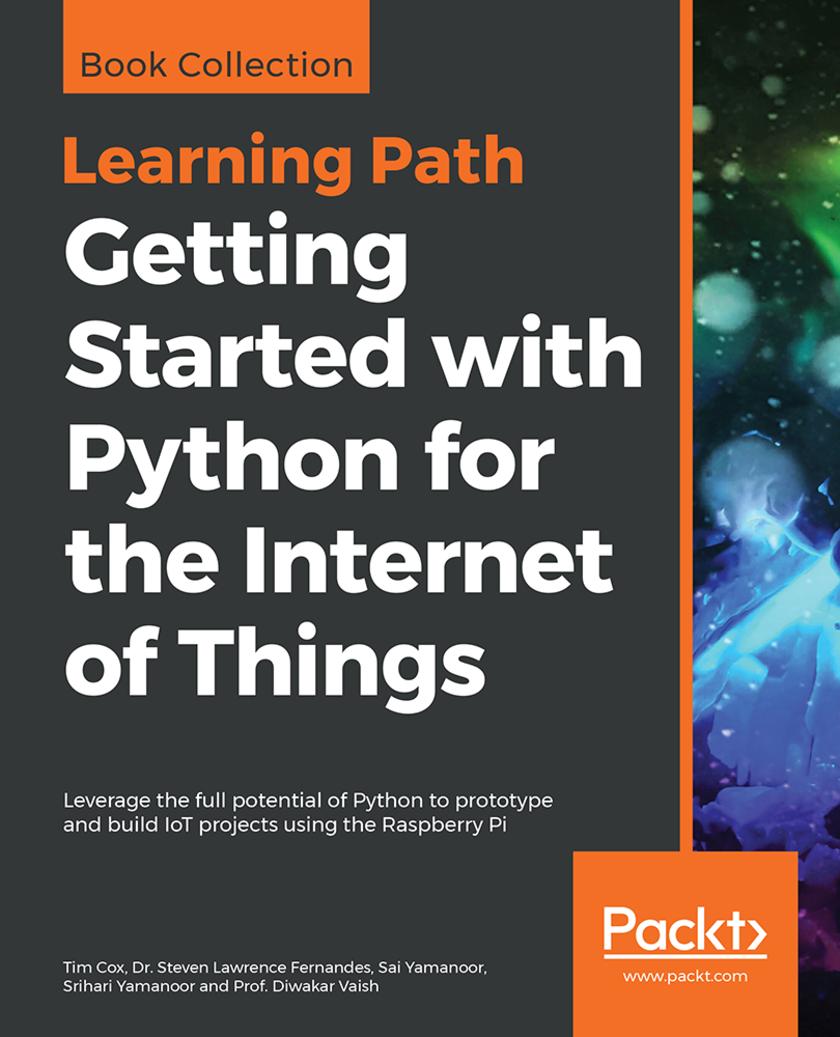
Getting Started with Python for the Internet of Things
¥90.46
Build clever, collaborative, and powerful automation systems with the Raspberry Pi and Python. Key Features * Create your own Pi-Rover or Pi-Hexipod robots * Develop practical applications in Python using Raspberry Pi * Build your own Jarvis, a highly advanced computerized AI Book Description This Learning Path takes you on a journey in the world of robotics and teaches you all that you can achieve with Raspberry Pi and Python. It teaches you to harness the power of Python with the Raspberry Pi 3 and the Raspberry Pi zero to build superlative automation systems that can transform your business. You will learn to create text classifiers, predict sentiment in words, and develop applications with the Tkinter library. Things will get more interesting when you build a human face detection and recognition system and a home automation system in Python, where different appliances are controlled using the Raspberry Pi. With such diverse robotics projects, you'll grasp the basics of robotics and its functions, and understand the integration of robotics with the IoT environment. By the end of this Learning Path, you will have covered everything from configuring a robotic controller, to creating a self-driven robotic vehicle using Python. * Raspberry Pi 3 Cookbook for Python Programmers - Third Edition by Tim Cox, Dr. Steven Lawrence Fernandes * Python Programming with Raspberry Pi by Sai Yamanoor, Srihari Yamanoor * Python Robotics Projects by Prof. Diwakar Vaish What you will learn * Build text classifiers and predict sentiment in words with the Tkinter library * Develop human face detection and recognition systems * Create a neural network module for optical character recognition * Build a mobile robot using the Raspberry Pi as a controller * Understand how to interface sensors, actuators, and LED displays work * Apply machine learning techniques to your models * Interface your robots with Bluetooth Who this book is for This Learning Path is specially designed for Python developers who want to take their skills to the next level by creating robots that can enhance people’s lives. Familiarity with Python and electronics will aid understanding the concepts in this Learning Path.
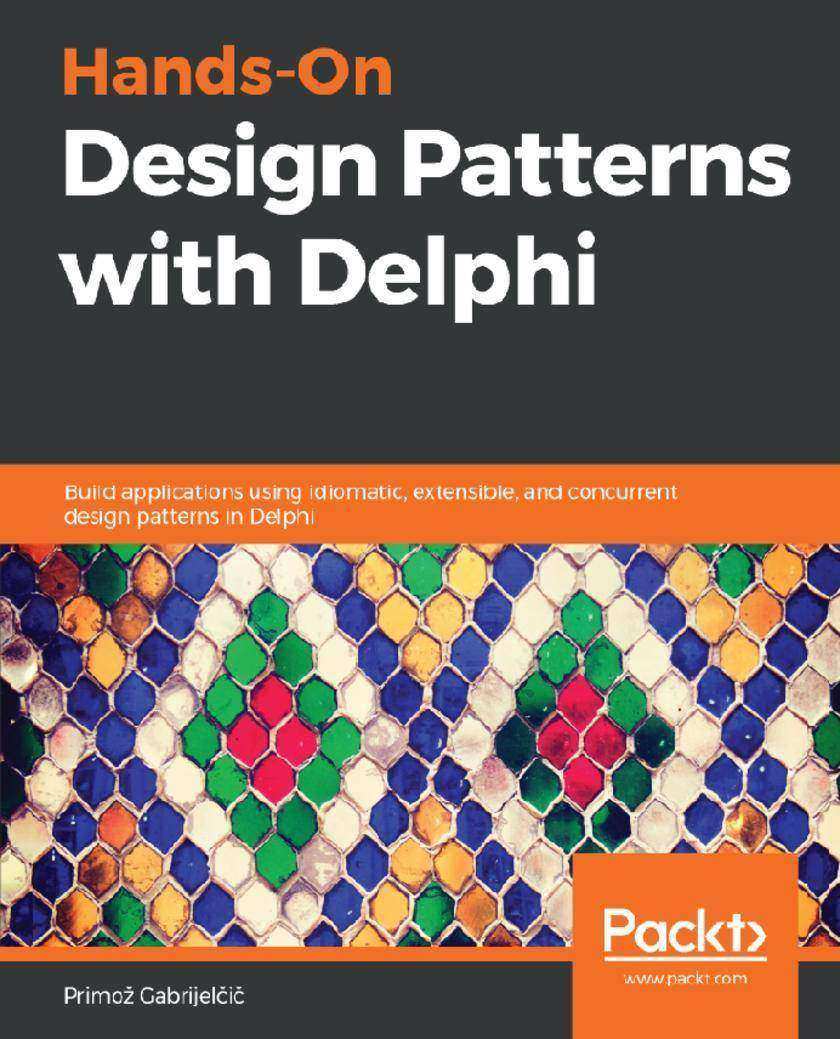
Hands-On Design Patterns with Delphi
¥81.74
Get up to speed with creational, structural, behavioral and concurrent patterns in Delphi to write clear, concise and effective code Key Features * Delve into the core patterns and components of Delphi in order to master your application's design * Brush up on tricks, techniques, and best practices to solve common design and architectural challenges * Choose the right patterns to improve your program’s efficiency and productivity Book Description Design patterns have proven to be the go-to solution for many common programming scenarios. This book focuses on design patterns applied to the Delphi language. The book will provide you with insights into the language and its capabilities of a runtime library. You'll start by exploring a variety of design patterns and understanding them through real-world examples. This will entail a short explanation of the concept of design patterns and the original set of the 'Gang of Four' patterns, which will help you in structuring your designs efficiently. Next, you'll cover the most important 'anti-patterns' (essentially bad software development practices) to aid you in steering clear of problems during programming. You'll then learn about the eight most important patterns for each creational, structural, and behavioral type. After this, you'll be introduced to the concept of 'concurrency' patterns, which are design patterns specifically related to multithreading and parallel computation. These will enable you to develop and improve an interface between items and harmonize shared memories within threads. Toward the concluding chapters, you'll explore design patterns specific to program design and other categories of patterns that do not fall under the 'design' umbrella. By the end of this book, you'll be able to address common design problems encountered while developing applications and feel confident while building scalable projects. What you will learn * Gain insights into the concept of design patterns * Study modern programming techniques with Delphi * Keep up to date with the latest additions and program design techniques in Delphi * Get to grips with various modern multithreading approaches * Discover creational, structural, behavioral, and concurrent patterns * Determine how to break a design problem down into its component parts Who this book is for Hands-On Design Patterns with Delphi is aimed at beginner-level Delphi developers who want to build scalable and robust applications. Basic knowledge of Delphi is a must.
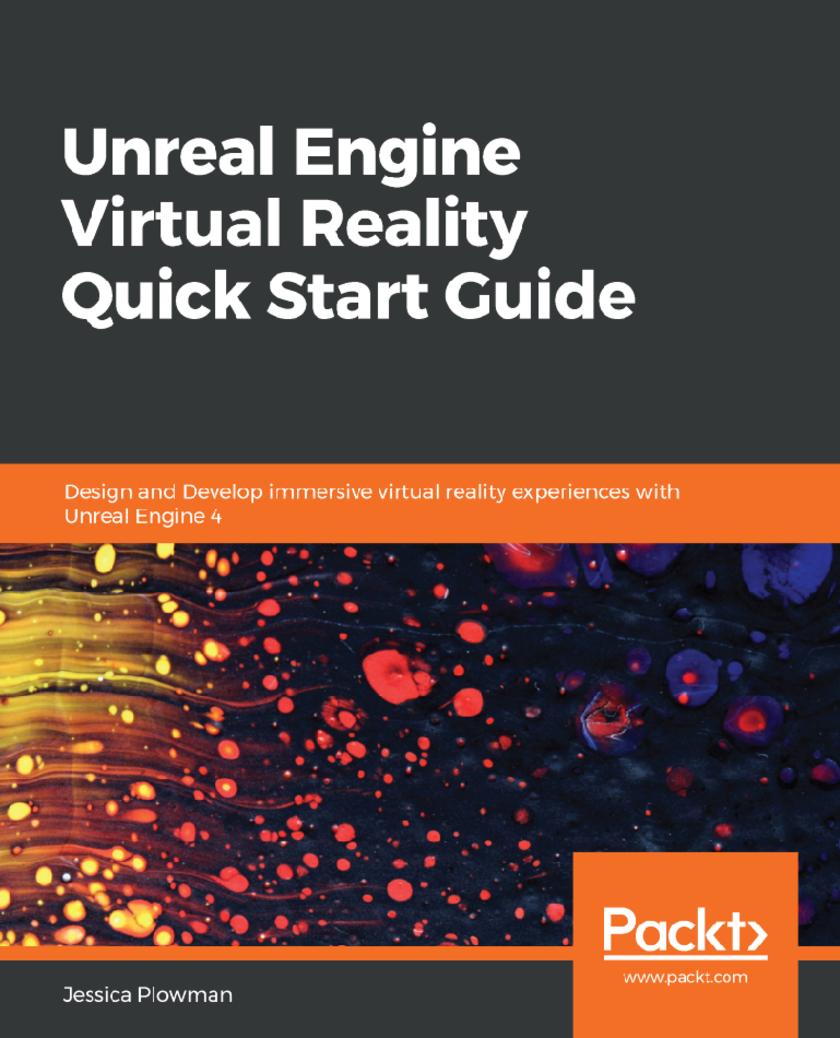
Unreal Engine Virtual Reality Quick Start Guide
¥54.49
Unreal Engine 4 for virtual reality game design, development, User Experience design techniques and Blueprint programming to create virtual reality gameplay for HTC Vive, Oculus Rift, PSVR, and Windows Mixed Reality headsets. Key Features * Build VR games from scratch with the power of Unreal Engine 4 * Learn User Experience design practices to take your VR game to the next level * Understand the best practices to creating art for games on HTC Vive, Oculus Rift, and PSVR Book Description With the ability to put players directly in the game, virtual reality gives users the chance to experience digital worlds directly. Nevertheless, many designers are unsure where to start when working with this amazing technology. With this book, you will learn user experience design processes and create immersive gameplay experiences designed for entertainment and player comfort. Using the power of Unreal Engine 4’s Blueprint visual scripting language, you will build player interaction and locomotion systems from scratch and use these flexible systems to create a sample game, as well as develop functional 2D and 3D user interfaces for players to interact with. And also learn the best practices for creating game art for virtual reality. Finally, you will learn how to test your application with your target audience and finalize your game for distribution. By the end of this book, you will have the knowledge to be able to make the leap from traditional game development to creating immersive virtual reality experiences using Unreal Engine 4. What you will learn * Understand how to get started with VR development in Unreal Engine 4 * Design and create interaction and locomotion systems from scratch * Plan and program a sample game for VR * Understand how VR affects user experience and user interfaces * Discuss what is needed to create optimized art for VR * Test your game with users and prepare for distribution Who this book is for The audience for this book is intermediate or advanced users of Unreal Engine 4 but who have not begun working with VR technology. These users are familiar with the game engine and have an interest in VR technology. They are just beginning to explore the VR features that the game engine has to offer.
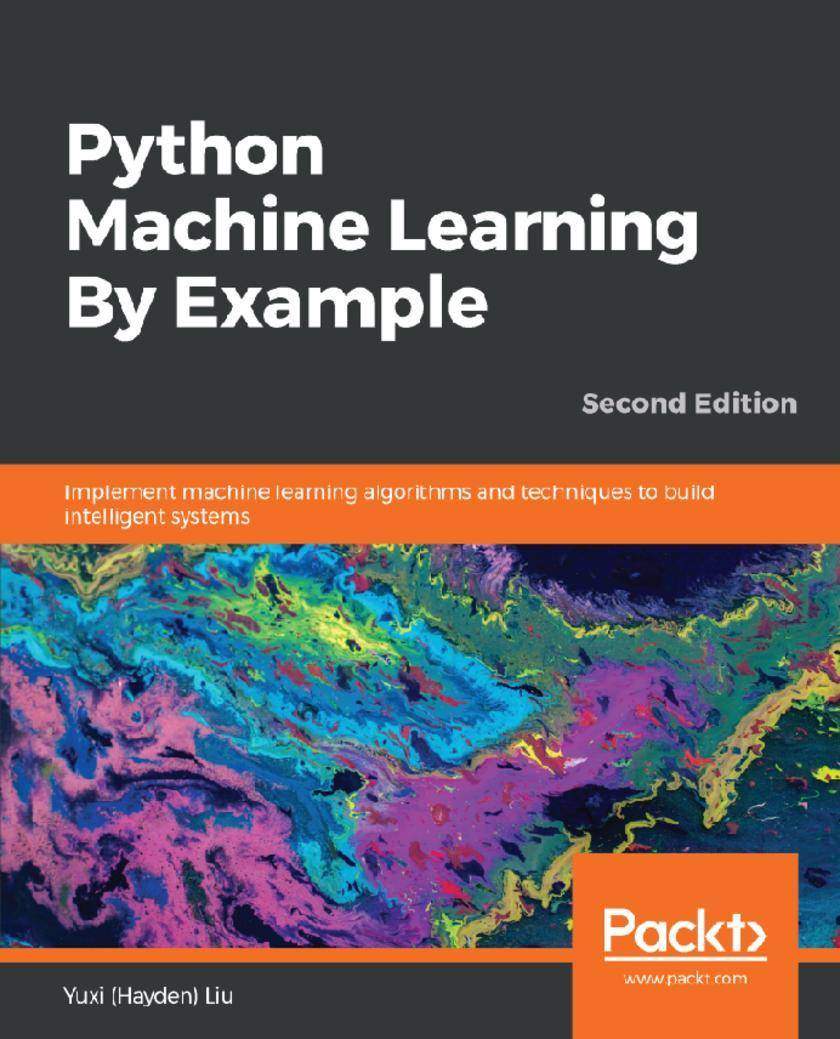
Python Machine Learning By Example
¥63.21
Grasp machine learning concepts, techniques, and algorithms with the help of real-world examples using Python libraries such as TensorFlow and scikit-learn Key Features * Exploit the power of Python to explore the world of data mining and data analytics * Discover machine learning algorithms to solve complex challenges faced by data scientists today * Use Python libraries such as TensorFlow and Keras to create smart cognitive actions for your projects Book Description The surge in interest in machine learning (ML) is due to the fact that it revolutionizes automation by learning patterns in data and using them to make predictions and decisions. If you’re interested in ML, this book will serve as your entry point to ML. Python Machine Learning By Example begins with an introduction to important ML concepts and implementations using Python libraries. Each chapter of the book walks you through an industry adopted application. You’ll implement ML techniques in areas such as exploratory data analysis, feature engineering, and natural language processing (NLP) in a clear and easy-to-follow way. With the help of this extended and updated edition, you’ll understand how to tackle data-driven problems and implement your solutions with the powerful yet simple Python language and popular Python packages and tools such as TensorFlow, scikit-learn, gensim, and Keras. To aid your understanding of popular ML algorithms, the book covers interesting and easy-to-follow examples such as news topic modeling and classification, spam email detection, stock price forecasting, and more. By the end of the book, you’ll have put together a broad picture of the ML ecosystem and will be well-versed with the best practices of applying ML techniques to make the most out of new opportunities. What you will learn * Understand the important concepts in machine learning and data science * Use Python to explore the world of data mining and analytics * Scale up model training using varied data complexities with Apache Spark * Delve deep into text and NLP using Python libraries such NLTK and gensim * Select and build an ML model and evaluate and optimize its performance * Implement ML algorithms from scratch in Python, TensorFlow, and scikit-learn Who this book is for If you’re a machine learning aspirant, data analyst, or data engineer highly passionate about machine learning and want to begin working on ML assignments, this book is for you. Prior knowledge of Python coding is assumed and basic familiarity with statistical concepts will be beneficial although not necessary.
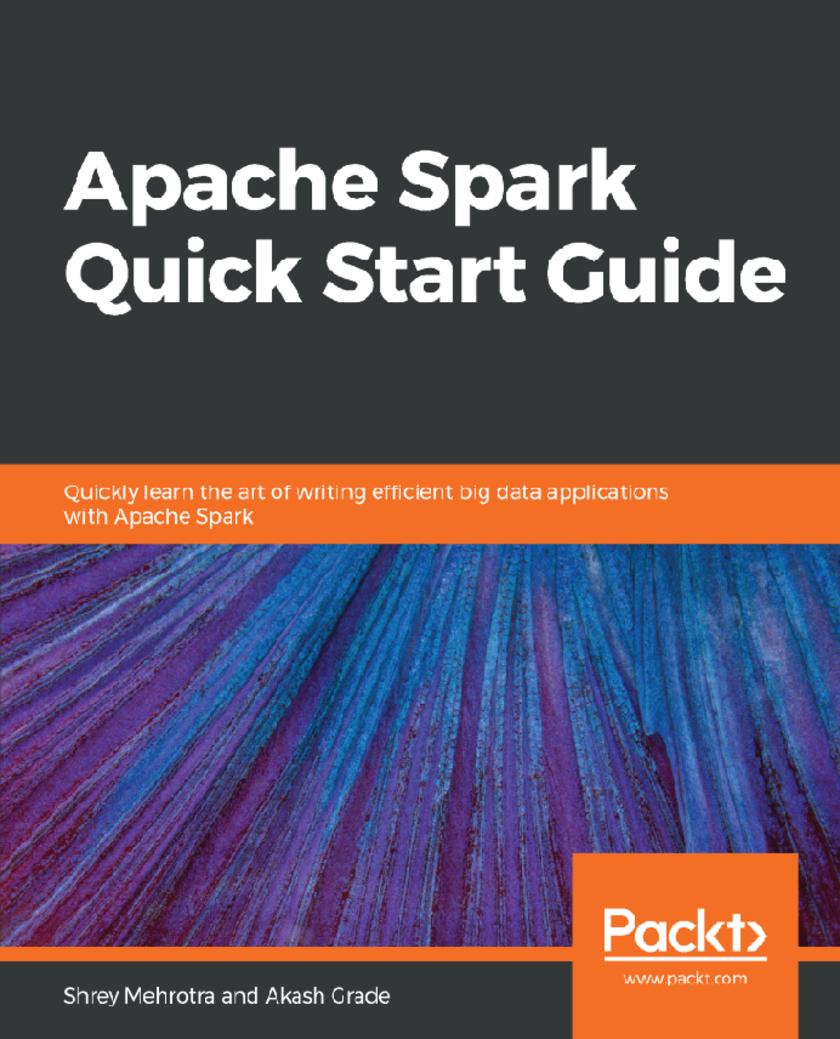
Apache Spark Quick Start Guide
¥54.49
A practical guide for solving complex data processing challenges by applying the best optimizations techniques in Apache Spark. Key Features * Learn about the core concepts and the latest developments in Apache Spark * Master writing efficient big data applications with Spark’s built-in modules for SQL, Streaming, Machine Learning and Graph analysis * Get introduced to a variety of optimizations based on the actual experience Book Description Apache Spark is a flexible framework that allows processing of batch and real-time data. Its unified engine has made it quite popular for big data use cases. This book will help you to get started with Apache Spark 2.0 and write big data applications for a variety of use cases. It will also introduce you to Apache Spark – one of the most popular Big Data processing frameworks. Although this book is intended to help you get started with Apache Spark, but it also focuses on explaining the core concepts. This practical guide provides a quick start to the Spark 2.0 architecture and its components. It teaches you how to set up Spark on your local machine. As we move ahead, you will be introduced to resilient distributed datasets (RDDs) and DataFrame APIs, and their corresponding transformations and actions. Then, we move on to the life cycle of a Spark application and learn about the techniques used to debug slow-running applications. You will also go through Spark’s built-in modules for SQL, streaming, machine learning, and graph analysis. Finally, the book will lay out the best practices and optimization techniques that are key for writing efficient Spark applications. By the end of this book, you will have a sound fundamental understanding of the Apache Spark framework and you will be able to write and optimize Spark applications. What you will learn * Learn core concepts such as RDDs, DataFrames, transformations, and more * Set up a Spark development environment * Choose the right APIs for your applications * Understand Spark’s architecture and the execution flow of a Spark application * Explore built-in modules for SQL, streaming, ML, and graph analysis * Optimize your Spark job for better performance Who this book is for If you are a big data enthusiast and love processing huge amount of data, this book is for you. If you are data engineer and looking for the best optimization techniques for your Spark applications, then you will find this book helpful. This book also helps data scientists who want to implement their machine learning algorithms in Spark. You need to have a basic understanding of any one of the programming languages such as Scala, Python or Java.




 购物车
购物车 个人中心
个人中心



